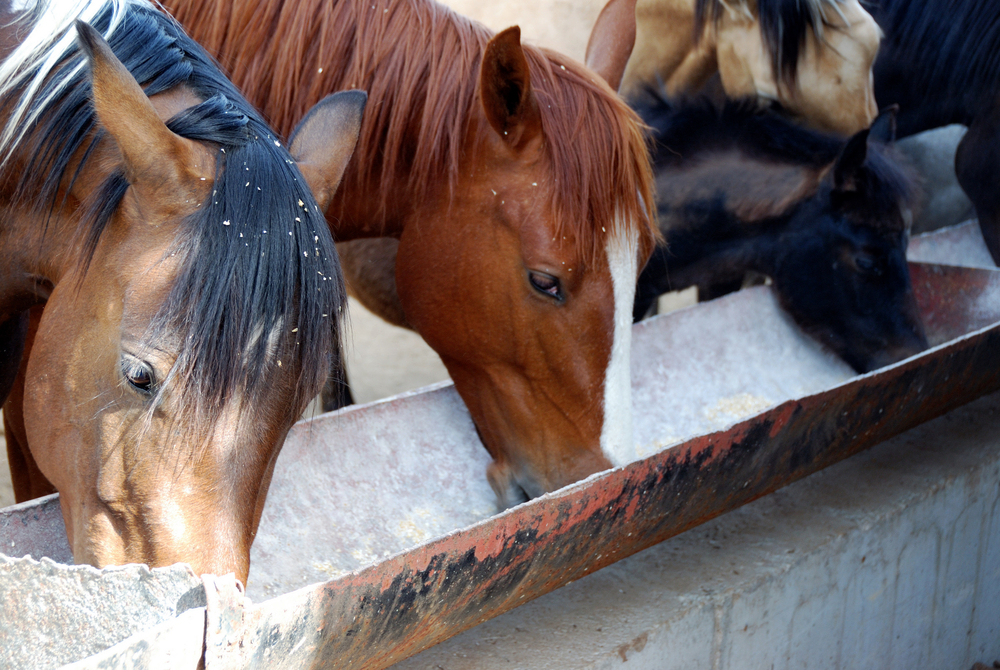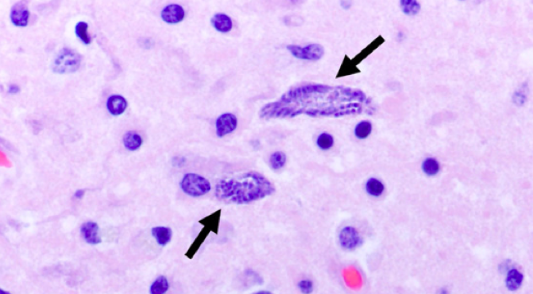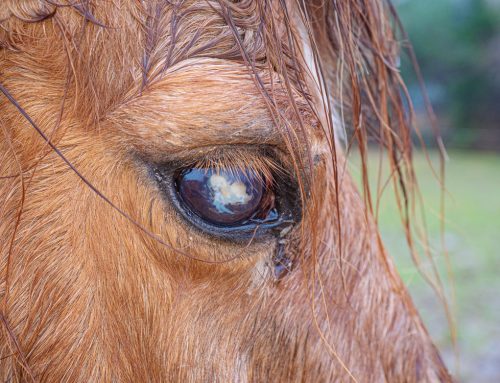More than 50% of U.S. horses are exposed to the parasite that causes Equine Protozoal Myeloencephalitis (EPM), which is considered the most prevalent cause of neurological disease in horses in the Americas. Our Leatherstocking Veterinary Services team explains what you need to know about this condition so you can reduce your horse’s risk.
Equine Protozoal Myeloencephalitis basics
EPM is caused by a protozoan parasite called Sarcocystis neurona, which is transmitted by the definitive host, the opossum. Other mammals, such as cats, raccoons, skunks, and armadillos, can be infected by the parasite, but they are considered “dead end” hosts, meaning they can’t pass the disease to horses. However, they can be a source of infection for opossums. Once ingested by an opossum, S. neurona reproduces in the small intestinal cells, resulting in oocysts that release infective sporocysts in the opossum’s feces. Horses become infected by ingesting food or water contaminated by infected opossum feces. While an estimated 50% to 90% of U.S. horses are exposed to S. neurona, fewer than 1% show clinical signs of the disease annually.
Equine Protozoal Myeloencephalitis signs
In an affected horse, the S. neurona sporocysts migrate from the intestinal tract to the bloodstream and cross the blood brain barrier where they attack the central nervous system, creating lesions in the brain, brain stem, or spinal cord. Signs depend on the severity of the disease and the location of the lesions, and onset can be sudden or gradual. Potential signs include:
- Lack of coordination
- Lameness or stilted, stiff movements
- Weakness
- Muscle atrophy (i.e., wasting)
- Facial paralysis
- Difficulty swallowing
- Abnormal sweating
- Loss of sensation
- Head tilt
- Seizures
Equine Protozoal Myeloencephalitis diagnosis
No EPM test in the live horse is currently considered definitive and other neurological disorders must be ruled out. Potential diagnostics include:
- Neurological examination — Your veterinarian will thoroughly assess your horse’s neurological status. EPM often affects one side of the body more than the other, but many neurological diseases cause similar signs.
- Blood tests — Blood tests can determine if your horse has been exposed to EPM, but cannot distinguish between quiet carriers and active infection. In addition, false positives and negatives can occur.
- Cerebrospinal fluid (CSF) testing — CSF evaluation tends to provide more accurate results, but the spinal tap procedure is more invasive than blood tests.
Equine Protozoal Myeloencephalitis treatment
The exact treatment plan depends on the severity of the disease, but may include:
- Antiprotozoal drug — Treatment for EPM should include a U.S. Food and Drug Administration (FDA) approved antiprotozoal drug. These medications are labeled for 28-day administration, but treatment may require three to nine months depending on the horse’s response.
- Non-steroidal anti-inflammatories (NSAIDs) — NSAIDs may be necessary to alleviate EPM signs and prevent reactions to parasite die-off caused by the treatment.
- Other anti-inflammatory medications — For horses who exhibit brain involvement, steroids or dimethyl sulfoxide may help reduce brain inflammation.
- Vitamin E — Vitamin E is an antioxidant that may support nervous tissue healing.
- Recheck — Your horse may need frequent rechecks to monitor their neurological progress and check for anemia, which is a potential treatment side effect.
Equine Protozoal Myeloencephalitis prognosis
Horses who receive treatment in the early stages of the disease have a better recovery chance. About 60% to 70% of horses affected by EPM who receive early aggressive treatment show significant improvement or complete recovery, and about 15% to 25% are able to return to their normal activity level. The greatest improvement is typically seen in the first four weeks. About 10% to 20% of horses experience an EPM relapse within two years.
Equine Protozoal Myeloencephalitis prevention

An EPM vaccine was available but was pulled from the market because it lacked efficacy, and no other vaccination for the disease is currently available. Ways you can minimize your horse’s EPM risk include:
- Keeping feed rooms and storage containers closed and sealed
- Avoiding feeding on the ground
- Using feeders that minimize spillage and make access difficult for wild animals
- Cleaning up dropped grain as soon as possible to discourage scavengers
- Covering hay storage areas
- Cleaning water tanks often
- Providing appropriate preventive care, such as regular veterinary wellness checks and routine deworming and vaccinations
- Avoiding feeding cats and dogs where horse feed is stored to prevent attracting wildlife
- Decreasing your horse’s stress, such as from transportation, which can put them at higher risk for EPM
- Trapping and relocating opossums you find on your property
If you are concerned about your horse’s neurological status, contact our Leatherstocking Veterinary Services team so we can assess their condition and start appropriate treatment as soon as possible.







Leave A Comment